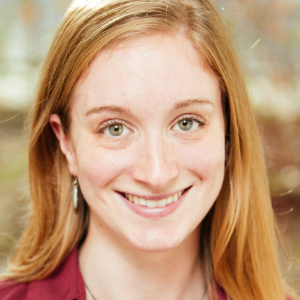Jul 01, 2020
Version 2
SPARC_Duke_PelotGrill_OT2-OD025340_RatVagusNerve_Collection_Histology_Microscopy V.2
- J. Ashley Ezzell1,
- Nicole A. Pelot2,
- Kara A. Clissold1,
- Warren M. Grill2
- 1University of North Carolina;
- 2Duke University
- SPARCTech. support email: info@neuinfo.org

Protocol Citation: J. Ashley Ezzell, Nicole A. Pelot, Kara A. Clissold, Warren M. Grill 2020. SPARC_Duke_PelotGrill_OT2-OD025340_RatVagusNerve_Collection_Histology_Microscopy. protocols.io https://dx.doi.org/10.17504/protocols.io.bh4bj8sn
License: This is an open access protocol distributed under the terms of the Creative Commons Attribution License, which permits unrestricted use, distribution, and reproduction in any medium, provided the original author and source are credited
Protocol status: Working
We use this protocol and it's working
Created: July 01, 2020
Last Modified: July 01, 2020
Protocol Integer ID: 38755
Keywords: Histology, Vagus nerve, Masson’s trichrome, Rat vagus nerve, Nerve morphology
Disclaimer
DISCLAIMER – FOR INFORMATIONAL PURPOSES ONLY; USE AT YOUR OWN RISK
The protocol content here is for informational purposes only and does not constitute legal, medical, clinical, or safety advice, or otherwise; content added to protocols.io is not peer reviewed and may not have undergone a formal approval of any kind. Information presented in this protocol should not substitute for independent professional judgment, advice, diagnosis, or treatment. Any action you take or refrain from taking using or relying upon the information presented here is strictly at your own risk. You agree that neither the Company nor any of the authors, contributors, administrators, or anyone else associated with protocols.io, can be held responsible for your use of the information contained in or linked to this protocol or any of our Sites/Apps and Services.
Abstract
Protocol for collection, histological processing, and imaging of rat vagus nerves.
Materials
- Adult Sprague-Dawley rats from Charles River
- 4% paraformaldehyde
- Mordant & tissue dye
- Ethanol
- Clearite
- Paraffin
- Xylene
- Bouin's fixative (mordant)
- Weigert's iron hematoxylin solution
- Biebrich scarlet-acid fuchsin solution
- Phosphomolybdic-phosphotungstic acid solution
- Aniline blue solution
- Acetic acid
- Microscope with color camera
Collect rat vagus nerve samples.
Collect rat vagus nerve samples.
We collected vagus nerve samples from perfused Sprague-Dawley rats that were used in other experiments approved by the Duke University Institutional Animal Care and Use Committee.
We perfused the rats with ~300 mL phosphate buffered saline or until the liver was cleared, followed by ~300 mL 4% paraformaldehyde or until the joints and tissues were stiff.
We collected samples of the carotid sheath in the neck bilaterally, where the vagus nerve courses straight with the common carotid artery, from the clavicle up to where the nerve and carotid intermingle with non-parallel other nerves. We measured from the "valley" of the common carotid bifurcation to the center of each sample.
We collected the esophagus from the diaphragm to the stomach with the subdiaphragmatic vagus nerves attached.
We dyed the rostral end of each sample green to maintain orientation during processing.
We placed each sample between two histologysponges in a mega-sized histology cassette. We placed the cassettes in a tub with 4% paraformaldehyde in a 4oC refrigerator.
Perform histological processing.
Perform histological processing.
We rinsed each sample with deionized water.
We processed each sample on the long cycle inthe Leica ASP300S Tissue Processor for ~10 hours: 70, 80, 95, 95, 100, 100, 100% ethanol for 30, 35, 40, 40, 40, 40, 40 min, respectively; Clearite for 50 min, three times; paraffin wax for 50 min, three times.
We embedded each sample in a paraffin block oriented to obtain transverse sections.
After trimming to the center of the sample, we collected 5 µm sections, placing two serial sections per microscope slide for fifteen slides.
The slides were air dried overnight at room temperature, then baked at 37oC overnight.
Of the 15 slides per sample, we stained slides 2 and 14 with Masson's trichrome as follows.
The slides were baked at 60oC for 1.5 hours and then cooled overnight.
We deparaffinized the slides and hydrated them to distilled water: xylene (2x 6 min), 100% ethanol (5 min), 95% ethanol (4 min), 70% ethanol (3 min), dH2O (2x 1 min).
We placed the slides in Bouin's fixative (mordant) at room temperature overnight.
We washed the slides in running tap water untilthe yellow color disappeared (~10 minutes).
We rinsed the slides in distilled water.
We placed the slides in Weigert's Iron Hematoxylin solution for 10 min.
We washed the slides in running tap water for 10min.
We placed the slides in Biebrich Scarlet-Acid Fuchsin solution for 5 min.
We washed the slides in running tap water for 2min.
We placed the slides in Phosphomolybdic-Phosphotungstic Acid solution for 10 min.
We transferred the slides directly to Aniline Blue solution for 3 min.
We differentiated the counterstain (A. blue) in 1% Acetic Acid solution for 1 min.
We dehydrated, cleared, and coverslipped the slides: 95% ethanol (1 min), 100% ethanol (4 min), xylene (5 min).
Perform microscopy.
Perform microscopy.
Each sample was imaged at 20x using a Nikon Ti2 microscope with a Photometrics Prime 95B-25MM camera (Nikon Instruments Inc.). We selected the best of four slices for each sample based on the quality of the slice (no tearing or fraying).
